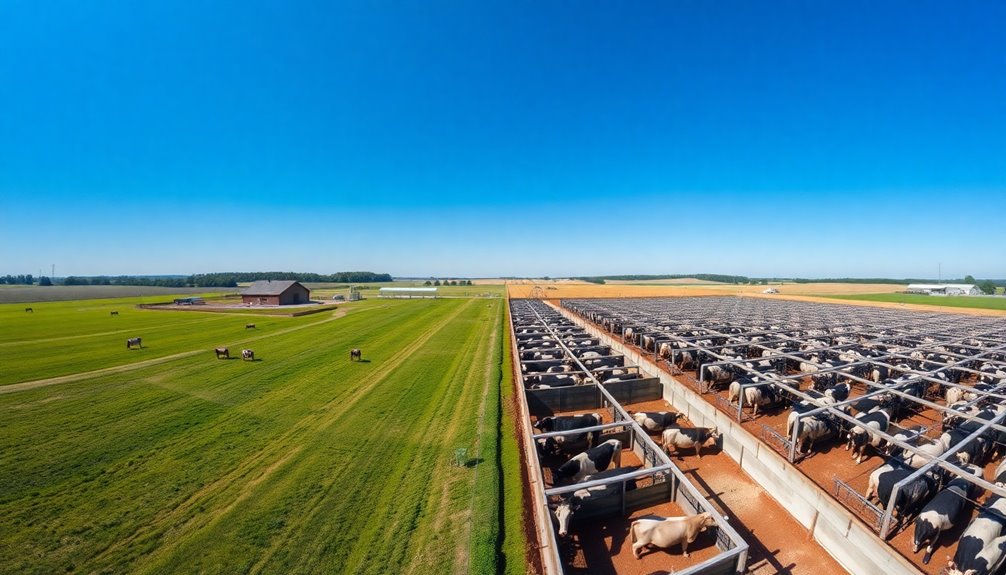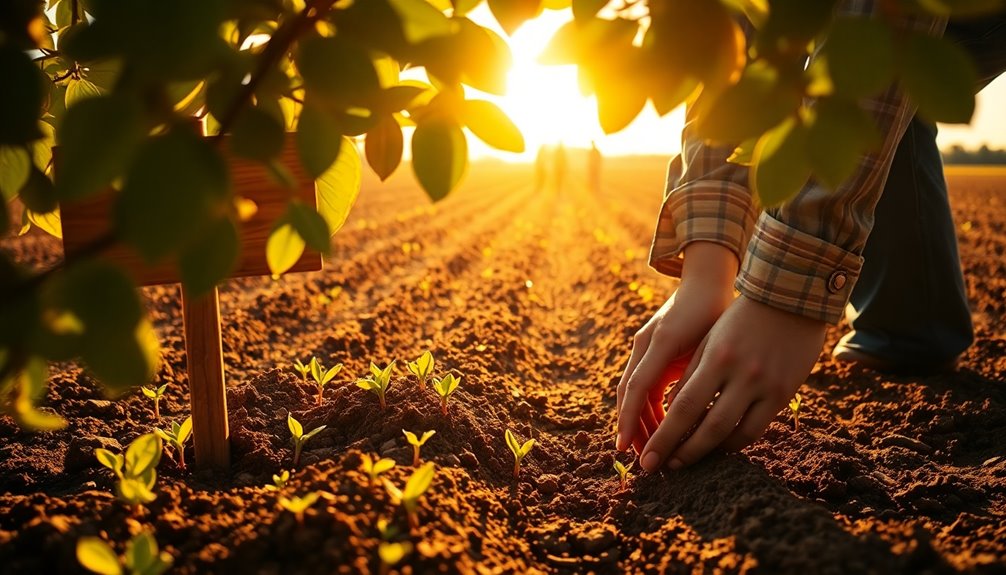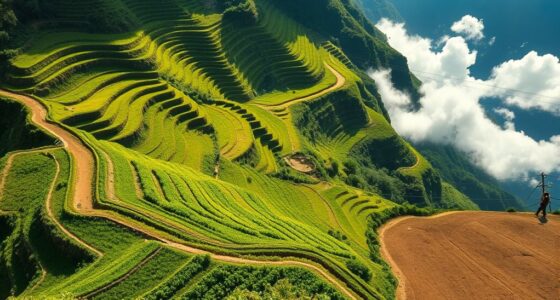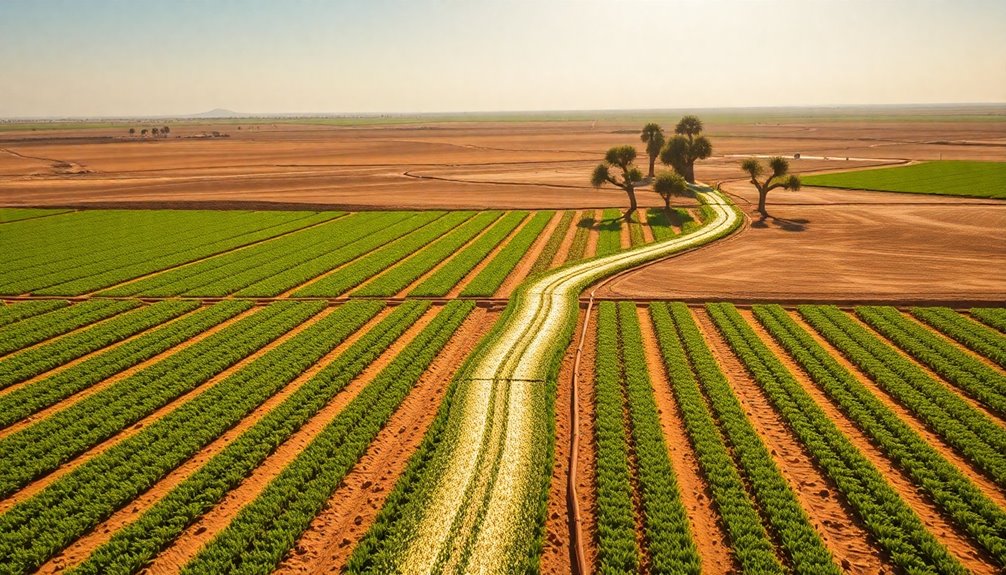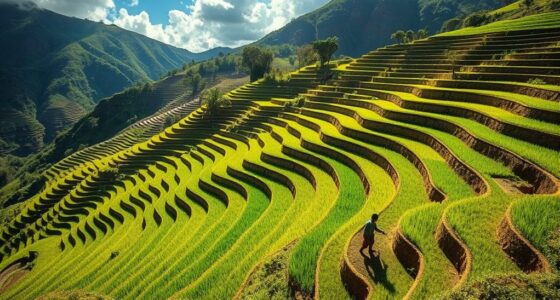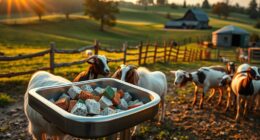Dairy farming mainly falls under intensive practices, focusing on maximizing milk production in limited spaces. Most U.S. farms, often classified as CAFOs, confine large numbers of cattle, which raises serious animal welfare concerns. While extensive farming allows cows to graze freely over larger areas, it's less common in high-demand markets. In expansive dairy operations, the focus shifts more toward yield than on animal health, leading to practices that can harm cows. If you're curious about the ethical implications and future of dairy farming, there's much more to uncover about these farming practices and their impact.
Key Takeaways
- Dairy farming primarily operates as intensive farming in the U.S., focusing on high milk production in confined spaces.
- Intensive practices, such as CAFOs, prioritize production but raise significant welfare concerns for the cattle.
- Extensive farming allows cows to graze freely on larger land areas, promoting better welfare and natural behaviors.
- Most dairy farms globally are intensive, with practices differing based on regional economic conditions and consumer demand.
- Understanding the distinction between intensive and extensive practices is crucial for addressing welfare and sustainability in dairy farming.
Overview of Dairy Farming
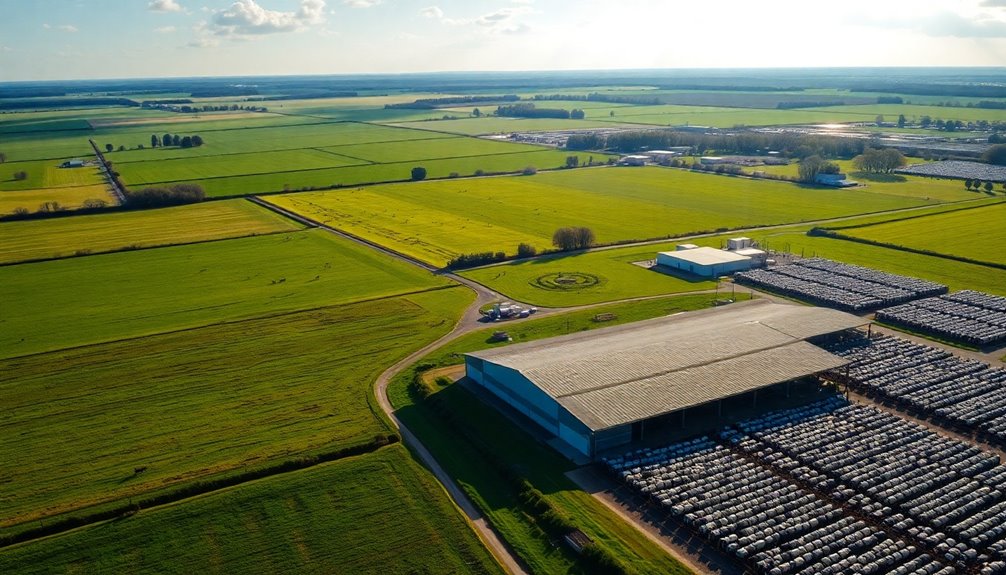
Dairy farming is essential in meeting the global demand for milk, with cattle providing a staggering 81% of the world's supply.
In the U.S., many farms operate as Concentrated Animal Feeding Operations (CAFOs), where at least 700 cattle live in confined spaces, reflecting a trend toward intensive farming. This method maximizes milk production but often raises concerns about animal welfare.
While CAFOs dominate, practices like freestall, tiestall, and pasture-based dairies show a range of approaches to dairy farming, impacting both cow comfort and productivity.
As the industry shifts towards larger operations, the number of dairy farms is dwindling, with fewer than 30,000 remaining.
Balancing efficiency with ethical considerations remains a critical challenge in dairy farming today.
Types of Dairy Farming
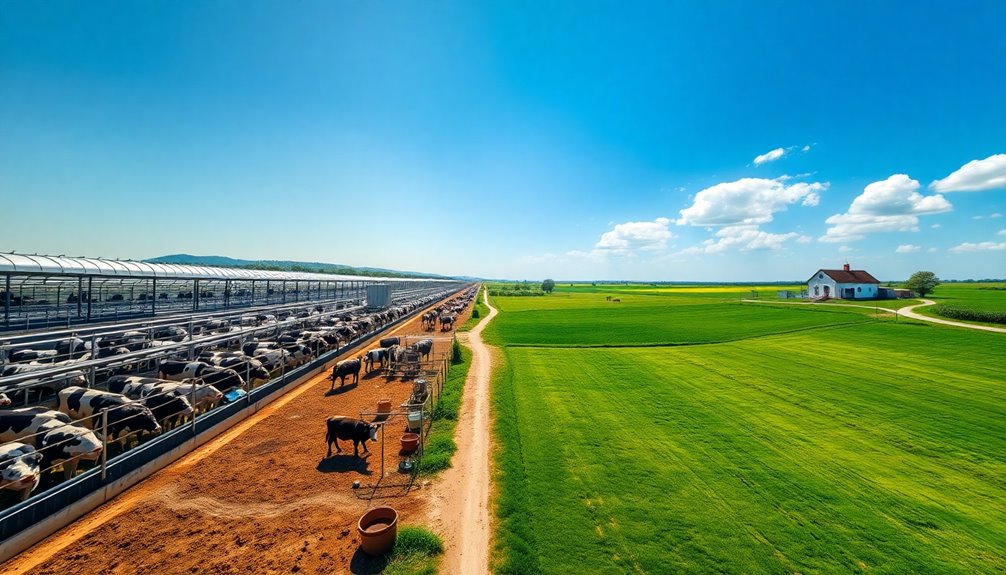
When exploring the various types of dairy farming, you'll find that each method has its own approach to cow management and welfare.
Here are four key types:
- Freestall dairies: Cows roam freely within barns, enhancing comfort and welfare.
- Tiestall dairies: Cows are tethered to stalls, limiting natural behaviors and potentially raising welfare concerns.
- Drylot dairies: Cows are confined to unpaved outdoor areas, often lacking pasture access.
- Pasture-based dairies: Cows graze freely, promoting a more natural lifestyle.
Most U.S. dairy farms fall under the intensive farming category, often classified as Concentrated Animal Feeding Operations (CAFOs).
Understanding these production systems helps you appreciate the diversity in dairy farming and its impact on animal welfare.
Intensive vs. Extensive Practices
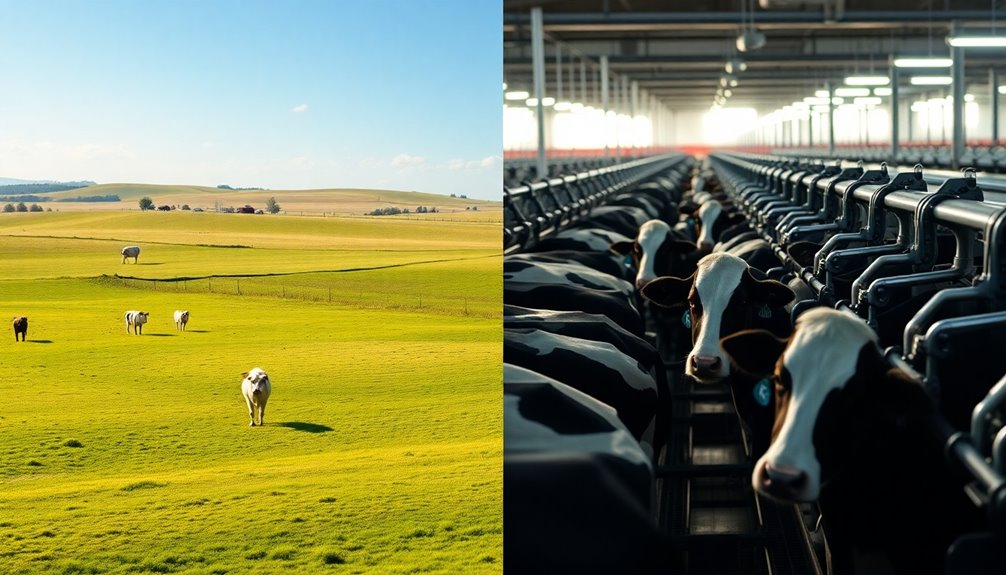
In the world of dairy farming, understanding the distinction between intensive and extensive practices is essential for grasping their implications on production and animal welfare.
Intensive dairy farming focuses on maximizing milk production from smaller land areas, often confining cattle in high-capital environments. This results in higher yields per acre, but it raises concerns about animal welfare. Most U.S. dairy operations fall into this category, particularly Concentrated Animal Feeding Operations (CAFOs) that house hundreds of cattle.
On the other hand, extensive dairy farming uses larger land areas, allowing cows to graze freely. This method, more common in lower-income countries, relies on natural resources and promotes animal welfare, as smaller farms prioritize subsistence over high milk production.
Welfare and Ethical Concerns
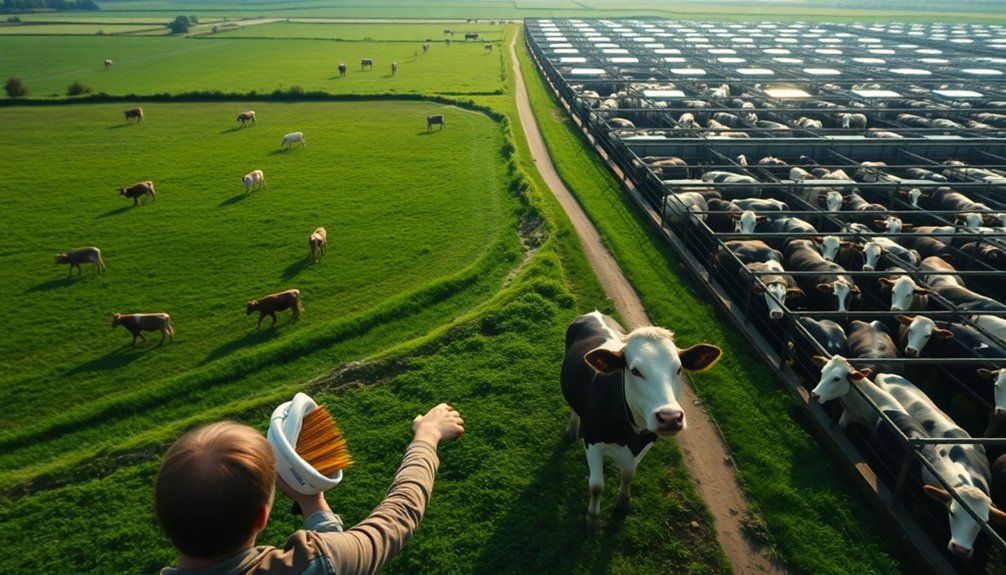
Many dairy cows face significant suffering due to industry practices that prioritize production over welfare. This suffering raises serious ethical concerns and highlights the need for reform.
Consider the following practices:
- Artificial insemination leads to repeated forced pregnancies for milk production.
- High rates of mastitis and lameness affect 40-50% of dairy cows due to poor living conditions.
- Tail docking, dehorning, and disbudding cause chronic pain and distress.
- Calves are separated from their mothers within 24-72 hours, disrupting their natural bond.
These concerns illustrate the urgent need for improved welfare standards in the dairy industry.
Economic Trends in Dairy Farming
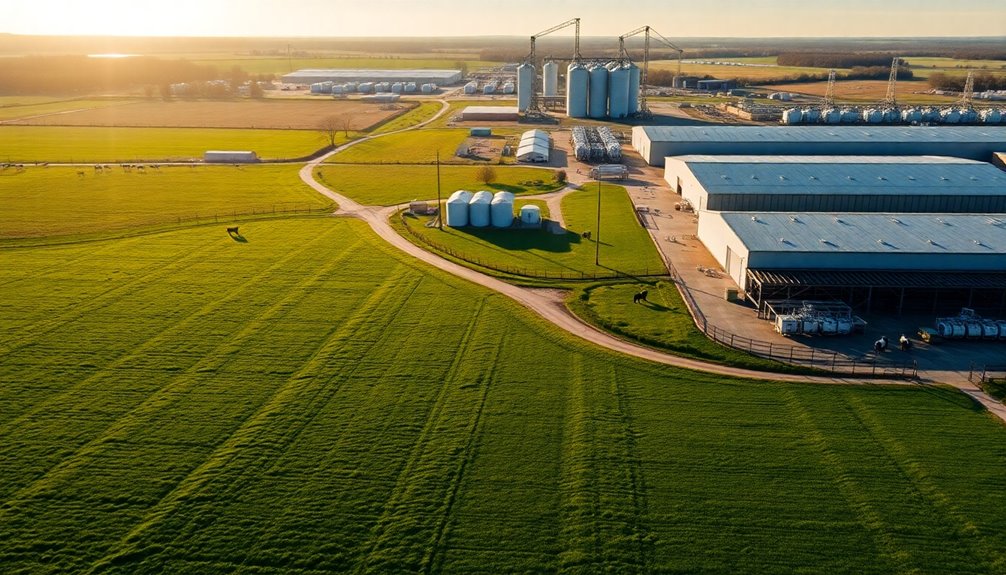
You're probably aware that the U.S. dairy industry generated around $45.5 billion in revenue last year, despite fewer dairy farms in operation.
This shift towards larger, more efficient farms reflects a significant trend in consolidation, where family-run operations struggle to keep up.
As you explore these economic trends, consider how they impact both the industry and traditional farming practices.
Industry Revenue Growth
While the U.S. dairy industry faces challenges, it still generated around $45.5 billion in revenue in 2022, underscoring its essential role in the economy.
Despite a decline in the number of dairy farms, production per cow continues to rise, showcasing increased efficiency.
Here's how the industry adapts:
- Fewer than 30,000 dairy farms exist today.
- Some operations house over 50,000 cows.
- Larger dairy farms benefit from economies of scale.
- Lower costs of production allow them to compete effectively.
This shift towards larger operations may enhance productivity, but it also puts small family-run dairy farms at risk, threatening traditional farming practices and the livelihoods tied to them. Additionally, the industry's focus on energy efficiency through advanced technologies can play a significant role in optimizing production and reducing operational costs.
Farm Consolidation Trends
Farm consolidation trends have reshaped the U.S. dairy landscape, dramatically reducing the number of operations from over 200,000 in the 1970s to fewer than 30,000 today.
This consolidation pushes many dairy farmers out of business, unable to compete with large operations that can house over 50,000 cows. As economies of scale drive down costs, modern dairy farms produce a large amount of milk, resulting in increased production despite fewer farms.
Unfortunately, this trend threatens family-run businesses and traditional farming practices, leading to a loss of generational knowledge. The shift towards industrial dairy farming puts pressure on smaller, sustainable farms, making it hard for them to survive in an increasingly competitive market.
Environmental Impact of Dairy
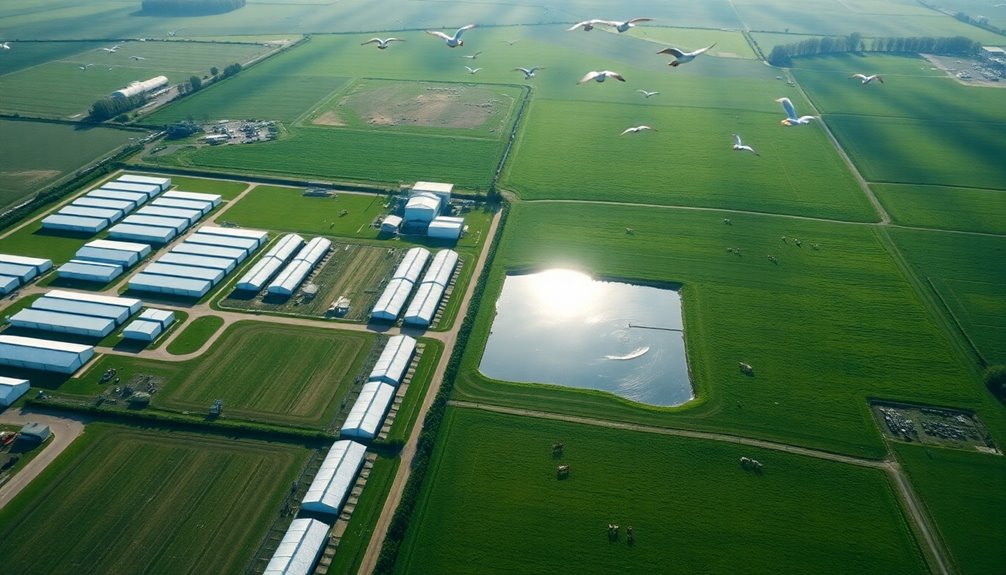
Dairy farming substantially affects the environment, contributing to 2.9% of anthropogenic greenhouse gas emissions. This impact is significant, especially considering:
- A dairy farm with 200 cows produces nitrogen sewage equivalent to a town of 10,000 people.
- Milk production is highly water-intensive; skipping one glass daily saves about 1,238 gallons annually.
- Large-scale operations often expand into arid areas, exacerbating water scarcity.
- Industrial practices raise serious concerns about pollution and water use.
These factors highlight the urgent need for more sustainable farming methods.
Impact on Calves
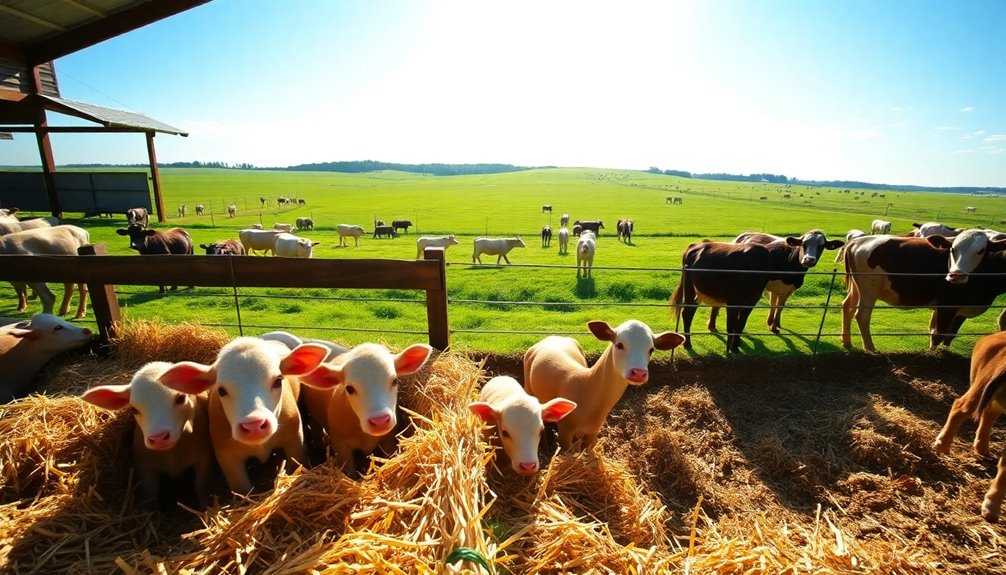
When you look at dairy farming practices, the impact on calves becomes clear.
Separating them from their mothers shortly after birth disrupts their natural bonding and affects their emotional well-being. This early separation, combined with limited social interaction, raises significant welfare concerns that could lead to long-term stress and behavioral issues.
Calf Separation Effects
Separation from their mothers can have profound effects on calves, disrupting their emotional and physical development.
When you consider calf separation, think about the following impacts:
- Disrupted bonding: Calves miss out on essential emotional development in those critical early days.
- Reduced nutritional intake: The milk they need is redirected for human consumption, affecting their growth.
- Isolation effects: Many calves are kept in individual hutches, limiting their movement and social interactions.
- Long-term stress: Early separation is linked to behavioral issues, resulting in anxiety and abnormal behaviors.
These factors can greatly impair a calf's overall well-being, underscoring the importance of considering how these practices affect young animals' lives.
Welfare Concerns for Calves
Often overlooked, the welfare concerns for calves in the dairy industry highlight significant issues that impact their health and development.
When calves are separated from their mothers within 24-72 hours, it disrupts their natural bonding and emotional well-being. The milk they'd normally consume is redirected for human production, depriving them of essential nutrition during critical growth stages.
Male calves face an even harsher reality, often sold for veal shortly after birth.
Additionally, isolating calves in individual hutches restricts their movement and social interactions, leading to stress and behavioral issues.
These practices not only compromise their welfare but also make them more susceptible to health problems, raising serious ethical questions about the dairy industry's treatment of these vulnerable animals.
Role of Technology in Dairy
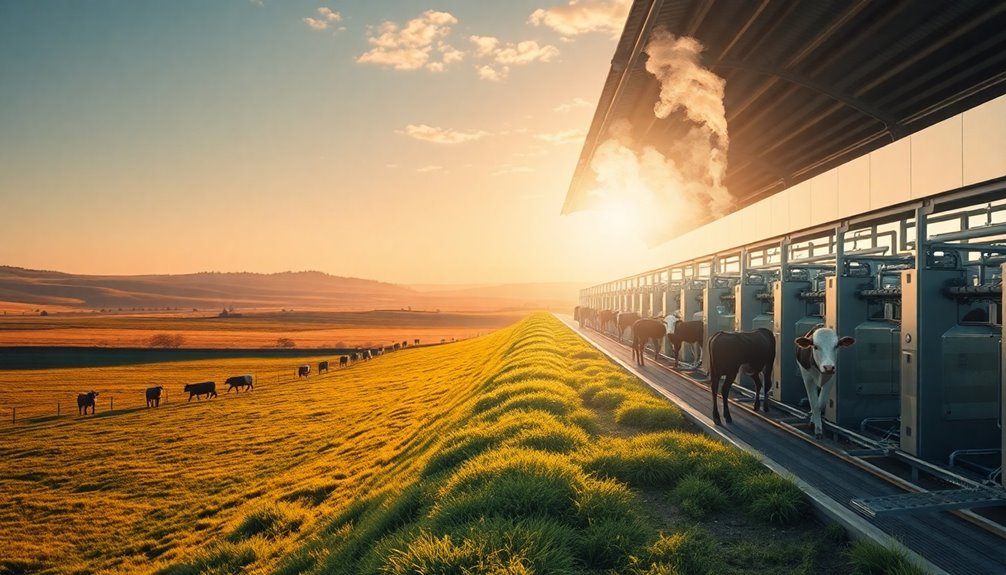
Technology has transformed the landscape of dairy farming, allowing farmers to tap into new efficiencies and enhance productivity.
With the right tools and advancements, you can see significant improvements in various aspects of your operations:
- Mechanization: Automated milking systems streamline the process of producing milk, freeing up your time.
- Energy Efficiency: Optimizing energy consumption can reduce costs, with farms using between 800 to 1,200 kWh per cow annually.
- Animal Health Monitoring: Advanced technology helps guarantee better welfare practices, so your cows stay healthy and productive.
- Sustainable Solutions: Solar energy installations offer a renewable option to tackle high operational energy demands.
Embracing these technologies not only boosts production but also supports a more sustainable future for dairy farming.
Future of Dairy Farming
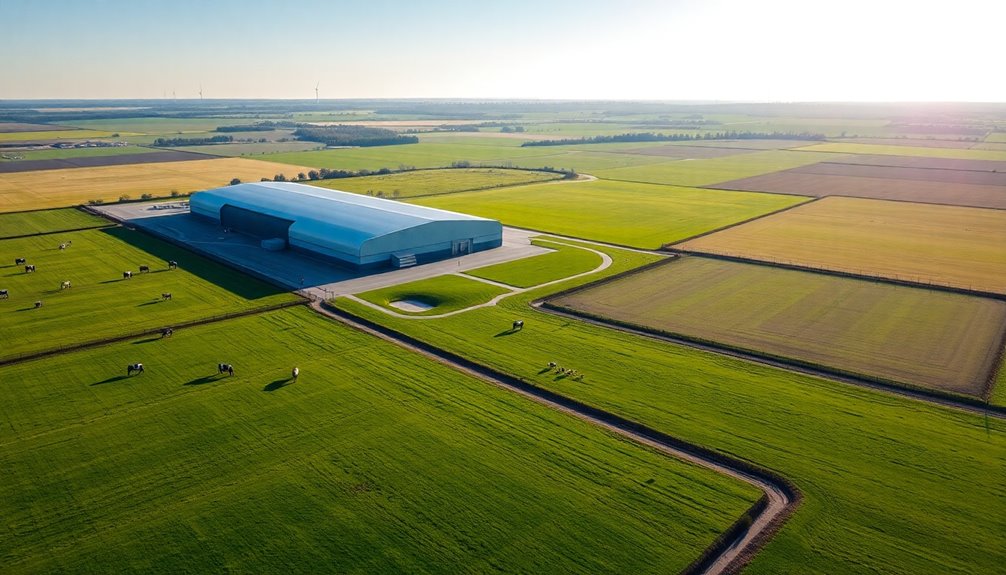
As you look toward the future of dairy farming, embracing innovation is key to steering through the challenges ahead. The global demand for dairy products is rising, pushing you to adopt efficient farming practices that maximize food production without expanding farmland.
Technological advancements, such as integrating solar energy solutions, can greatly reduce operational costs while promoting sustainability in your dairy business. Striking a balance between high yield and preserving the natural environment will be essential for food security.
Additionally, the consolidation of dairy operations is likely to continue, allowing larger farms to benefit from economies of scale. As a result, smaller family-run farms may decline, reshaping the landscape of the dairy industry you know today.
Frequently Asked Questions
Is Dairy Farming Intensive or Extensive?
When you consider dairy farming, you'll notice most operations are intensive. This method involves keeping a large number of cows in confined spaces, maximizing milk production through high investment and mechanization.
While extensive farming allows cows to roam freely on vast land, it's less common in wealthier countries. In fact, the majority of milk you find in stores comes from these intensive systems, reflecting efficiency and scale in production.
Is Dairy Farming Labor Intensive?
Absolutely, dairy farming is labor-intensive.
Did you know that the average dairy farm can have between 25 to over 105 cows per Full-Time Equivalent (FTE)? This number illustrates the varying labor demands based on the farm's size.
You'll find tasks like milking, feeding, and cleaning require consistent manual effort. While larger farms can achieve economies of scale, they still contend with high labor costs, making effective labor management essential for productivity.
Are Dairy Farms Good or Bad for the Environment?
When you consider whether dairy farms are good or bad for the environment, it's clear there are significant concerns.
Dairy farming contributes to greenhouse gas emissions and uses vast amounts of water.
You might be surprised to learn that a farm with 200 cows can produce nitrogen waste equivalent to a town of 10,000 people.
This pollution affects water quality, leading many to question the sustainability of current dairy farming practices.
Are Cows Intensive or Extensive?
Imagine a lush green pasture where cows roam freely, munching on fresh grass under the sun.
Now, picture a crowded barn, where cows stand shoulder to shoulder, confined and stressed.
When you ask if cows are intensive or extensive, it's clear: many are raised in intensive systems, facing high production pressures.
But those in extensive systems enjoy better living conditions, leading to healthier, happier lives.
Your choice affects not just cows, but the environment too.
Conclusion
In the debate between intensive and extensive dairy farming, it's clear that both practices come with their own sets of challenges and benefits. As you weigh the impacts on welfare, the environment, and economics, consider this: what kind of dairy future do you want to support? By staying informed and making conscious choices, you can help shape a more sustainable and ethical dairy industry that respects both animals and the planet. Your voice matters!

